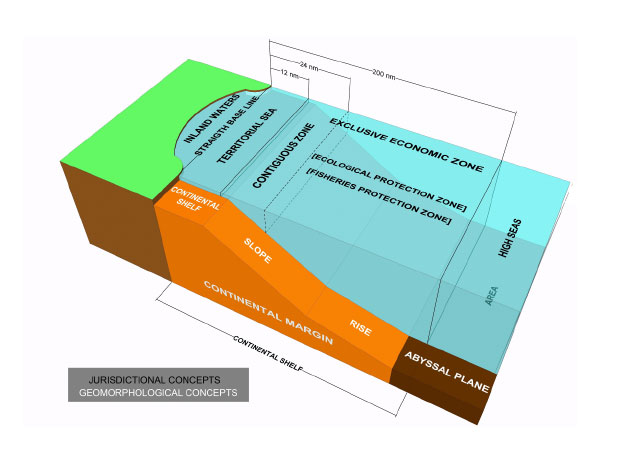The principle of the freedom of the high seas was established in the early nineteenth century.
This principle has two meanings.
First, the freedom of the high seas means that the high seas are free from national
jurisdiction. In this regard, Article 89 of the LOSC makes clear that ‘[n]o State may validly
purport to subject any part of the high seas to its sovereignty’.
Second, the freedom of the high seas means the freedom of activities there. This is a
corollary of the fact that the high seas are free from the national jurisdiction of any State.
Consequently, each and every State has an equal right to enjoy the freedom to use the high
seas in conformity with international law. In this regard, Article 87(1) provides:
The high seas are open to all States, whether coastal or land-locked. Freedom of the high seas is
exercised under the conditions laid down by this Convention and by other rules of international
law. It comprises, inter alia, both for coastal and land-locked States:
(a) Freedom of navigation;
(b) Freedom of overflight;
(c) Freedom to lay submarine cables and pipelines, subject to Part VI;
(d) Freedom to construct artificial islands and other installations permitted under international
law, subject to Part VI;
(e) Freedom of fishing, subject to the conditions laid down in section 2;
(f ) Freedom of scientific research, subject to Parts VI and XIII.
This provision calls for six brief comments.
First, the term ‘inter alia’ suggests that the freedom of the high seas may comprise other
freedoms which are not provided for in Article 87(1). Yet it is unclear what activities may
fall within the category of other freedoms of the high seas. In particular, a sensitive issue
arises with regard to the legality of military activities on the high seas. While Article 88 of
the LOSC provides that the high seas shall be reserved for peaceful purposes, it is generally
considered that this provision does not prohibit naval manoeuvres and conventional
weapons testing on the high seas. However, Article 301 explicitly prohibits military
activities which are contrary to the UN Charter, by providing that:
In exercising their rights and performing their duties under this Convention, States Parties shall
refrain from any threat or use of force against the territorial integrity or political independence
of any State, or in any other manner inconsistent with the principles of international law
embodied in the Charter of the United Nations.
Second, as explained in the previous chapter, freedom to construct artificial islands and
freedom of scientific research may be qualified by the coastal State jurisdiction in superjacent
waters of the continental shelf beyond 200 nautical miles. It would follow that the
six freedoms fully apply only to the high seas as superjacent waters of the Area.
Third, as ITLOS stated in the M/V ‘Louisa’ case, the freedom of navigation does not give a
vessel ‘a right to leave the port and gain access to the high seas notwithstanding its
detention in the context of legal proceedings against it’.
Fourth, an issue arises of whether protest at sea using vessels can be regarded as an
internationally lawful use of the sea. In this regard, Annex VII Arbitral Tribunal, in the
Arctic Sunrise case, took this view: ‘The right to protest at sea is necessarily exercised in
conjunction with the freedom of navigation.’
Fifth, the freedom of the high seas is not absolute. As provided in Article 87(2), the
freedom must be exercised ‘with due regard for the interest of other States in their exercise
of the freedom of the high seas, and also with due regard for the rights under this
Convention with respect to activities in the Area’. It is also to be noted that the freedom
of the high seas may be qualified by specific treaties respecting such things as conservation
of marine living resources and marine environmental protection.
Finally, the freedom of laying submarine cables and pipelines on the bed of the high seas
beyond the continental shelf is provided in Article 112. At the same time, States are under
the obligation to adopt the necessary laws and regulations to prevent the breaking or injury
of a submarine cable beneath the high seas by a ship flying its flag or by a person subject to
its jurisdiction in accordance with Article 113

